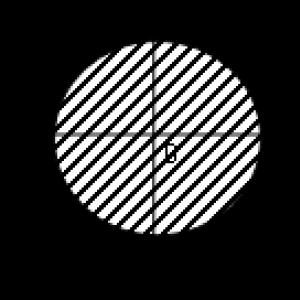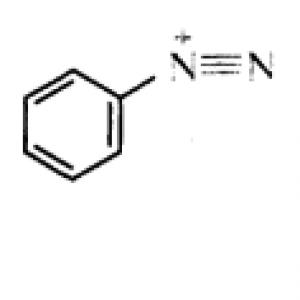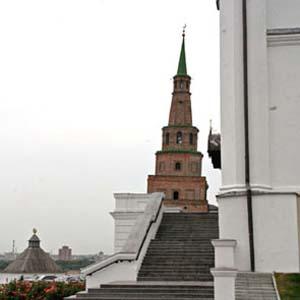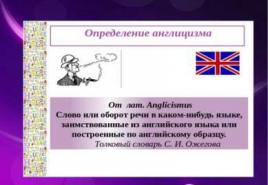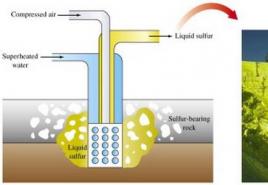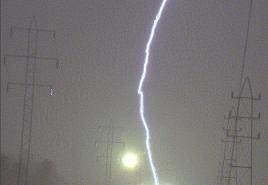Criteria for choosing UMK for primary school. Primary school programs
Dear parents of elementary school students, puzzle yourself with the question: what program do your children use to complete their 4-year educational journey? Believe me, it is really important to choose the right school, training program, and teaching materials, since it is studying in primary school that determines the child’s attitude towards the educational process at the next stages of education.
In modern learning conditions, the traditional formula “I know, but I still don’t know how” is transformed into the formula “I don’t know how, that means I don’t know.” Only by becoming the subject of his own actions and his own activities does a person for the first time gain the opportunity to become a person.
V. V. Davydov,
Doctor of Psychology, Professor, Academician of the Russian Academy of Education
The views of parents are not always correct, just like the views of all other people. However, in a realm of subjectivity such as education, where success largely depends on the interactions of people, where belief in success is an indispensable condition for its achievement, a deeper understanding of the views of parents plays a vital role.
Schools, and therefore national policies, that do not attach importance to this are doomed to failure.
Michael Barber
Professor,
Ch. Adviser to the Prime Minister of Great Britain on Education
Every parent dreams of his child studying with desire, eagerness, learning something new, reaching for a book, and learning to be independent as quickly as possible. What does that require? Of course it's a good school! Yes, we also need a modern, thinking teacher who is competent in the field of teaching, development, and raising children. And, of course, teaching aids: textbooks, workbooks and test books, methodological developments and comments for the teacher.
Currently, the primary school is at the stage of modernization and serious updating of educational content. The adoption of the new Education Standard entailed many innovations and changes associated with a change in the educational paradigm. Naturally, the fact that the Standard declares a system-activity approach cannot but affect the new quality of modern education, the change in the content of the textbooks that our children learn from in primary school.
Of course, each general education institution carefully selects the textbooks that its students will use during the school year. This is a very serious choice, which is determined by the goals, objectives, mission, and priority areas of activity of a particular school. By choosing textbooks, the school, as they say, determines its identity, presenting to parents and society as a result of education the model of the student it will form. It is the textbooks that our children learn from that contain the important content and technologies that help shape personality.
About the three educational systems adopted by the state
Now our students of the 1st stage of education are studying within the framework of one state system. There are three education systems adopted by the state:
– traditional initial system;
– developmental system of L.V. Zankova;
– developmental system D.B. Elkonina - V.V. Davydova.
In three primary education systems there is intensive development variability educational programs and educational and methodological complexes.
Due to the fact that it is difficult for a teacher to model his own set of textbooks, teams of authors from different publishing houses have developed complete education models, which are provided with sets of textbooks for all subjects from grades 1 to 4.
Each model of primary education is built on common psychological and pedagogical conceptual foundations. Content subjects in these models is built in a single logic, which corresponds to the methodological apparatus of all textbooks.
Currently to holistic models relate:
– Educational and training complex “Primary school of the XXI century” (scientific supervisor, professor N.F. Vinogradova);
– UMK “School 2000...” (mathematics) – (scientific supervisor, professor L.G. Peterson);
– Educational and training complex “Planet of Knowledge” (edited by I.A. Petrova);
– “School 2100” (scientific supervisor Academician A. A. Leontyev);
– UMK “Harmony” (scientific supervisor, professor N.B. Istomina);
– Educational and educational complex “School of Russia” (scientific supervisor A.A. Pleshakov);
– Educational and educational complex “Classical primary school” (scientific supervisor, professor T. G. Ramzaeva);
– UMK “Perspective”;
– Educational and educational complex “Prospective Primary School” (scientific supervisor, professor R.G. Churakova)
– Teaching and learning system of the development system L.V. Zankova;
– Teaching and learning system of the development system D.B. Elkonina - V.V. Davydova.
What is an educational and methodological complex (EMC)?
Educational and methodological complex (UMK)– this is a set of educational and methodological materials and software and hardware that contribute to the effective development by students of educational material included in the curriculum of the subject course. In other words, teaching materials are a set of components: textbooks, methodological recommendations for teachers, workbooks and test books, perhaps materials on digital media, etc.
The educational complex must have the following distinctive features:
– availability of a full package of manuals on paper and electronic media, ensuring the complexity and continuity of all levels of school education;
– a clear functional focus of each component of the educational complex on solving a specific pedagogical problem;
– a unified methodological, informational and design approach that takes into account the age-related psychophysiological characteristics of schoolchildren;
– the presence of a “navigation” system that ensures systematic organization of the educational process and ease of information retrieval;
– use of progressive forms and methods of presenting material based on modern information technologies.
– accessibility to use;
– interactivity;
– focus on practical activities of students;
– allows maximum consideration of the individual needs and abilities of each participant in the educational process.
How is the learning process structured in primary school?
The learning process in primary school is based on the educational program chosen by the teacher. Educational programs are in the official language and are called the educational and methodological complex (UMC), which was discussed earlier.
The teacher has the right to choose teaching materials only in accordance with the educational program that is approved in the educational institution (in accordance with the Law of the Russian Federation “On Education”). When choosing a program as a basis, the teacher follows it for all four years.
When choosing textbooks, you must be guided by the Federal List of textbooks recommended (approved) for use in the educational process and by general education institutions that implement educational programs of general education and have state accreditation for a certain academic year.
In the Federal List, textbooks are presented by subject line. Please note that the Federal List contains textbooks on subject lines that are not included in any of the teaching materials mentioned above, but are certified by the Ministry of Education and Science of the Russian Federation. Without this Grif, a general education institution and a teacher do not have the right to take this or that textbook for work. The stamp becomes for every teacher the measure that allows the textbook to meet the requirements of the Educational Standard. Grif accepts or recommends textbooks for use with students at school.
In recent years, changes in primary education have manifested themselves in the improvement and updating of the content of primary education, as well as in the emergence of alternative educational and methodological kits.
Holistic models of primary education, provided with sets of textbooks in all subjects from the first to the fourth grade, allow the teacher to choose a trajectory of the educational process that corresponds to the capabilities and needs of the students, the teacher, and the traditions of the general education institution.
Each teaching and learning kit has a concept. The content of teaching academic disciplines, methodological apparatus, and means of orientation for teachers and students in manuals are built in strict accordance with the conceptual provisions and features of the educational complex.
Thus, the unity of teaching materials guarantees students, teachers, and parents consistency not only in the presentation of content material, which is also an important criterion for focusing on technology in the organization of educational activities in each lesson for 4 academic years.
By the way, in one school, in different classes, students can study using different teaching materials, as well as study within different educational systems. Regardless of the system, the student has the opportunity to obtain the same knowledge required by the state Standard. Tasks of increased difficulty, which are associated only with developmental systems, are included in all sets, but are not mandatory for mastering. Once again, we draw your attention to the fact that it is the school that chooses the teaching and learning center, because it knows by what means and methods it will implement the concept of the authors of textbooks and manuals.
Let's carefully read the fragments of the Law “On Education” again.
“The competence of an educational institution includes determining the list of textbooks in accordance with the approved federal lists of textbooks recommended or approved for use in the educational process in educational institutions that have state accreditation and implement educational programs of general education, as well as teaching aids approved for use in the educational process in such educational institutions." (See Article 28, paragraph 3, paragraph 9).
“The content of education in a particular educational institution is determined by the educational program approved and implemented by this educational institution independently. The main educational program in an educational institution with state accreditation is developed on the basis of the corresponding exemplary basic educational programs and should ensure that students (pupils) achieve the results of mastering the basic educational programs.” (See Article 28, paragraph 2).
The mentioned articles of the Law “On Education” give educational institutions sufficient freedom in determining the educational and methodological complex for use in working with children.
Criteria that are important for choosing textbooks
And now let us introduce you to criteria, which are usually oriented by the teacher, the educational institution, and are determined in the choice of teaching materials.
By content. The level of compliance of the basic educational material must meet the requirements of the “Exemplary basic educational programs for primary general education.” This material, included in the program by the author, must be studied completely in accordance with the author's program (otherwise the program will not be completed). It is important that there is material to expand children’s ideas about the cultural aspect of human knowledge, about the connection of this science with other areas of human culture.
Textbooks must contain a system of educational tasks that stimulate children to master new educational material, providing cognitive motivation.
By technology(the assistance of this textbook in the implementation of interdisciplinary, meta-subject, and supra-subject programs). All textbooks from the educational complex are capable of implementing an activity-based approach to teaching, as well as optimizing the implementation of the “Reading” program. Working with information."
Based on the composition of the educational book. The methodological apparatus of the textbook allows students to navigate its contents. It has developed a system of symbols, pictograms, navigators - special symbols for organizing educational activities; availability of reference material and the form of its presentation. This aspect will contribute to the formation of universal educational activities.
The tasks in the textbooks assume multifunctionality. It is necessary that any task in a printed educational book or workbook allows both the teacher and the student to see and realize the potential for personal growth of the student.
The organization of material in the textbook and workbook should be aimed at developing control and assessment actions among students.
A system for assessing the learning outcomes achieved by students should be built, most likely in a special notebook for independent work and tests.
Starting our conversation about choosing a teaching and learning complex, it should be said that in order to implement the concept of a particular teaching and learning complex, it is important who will be the teacher who can convey the author’s ideas and plans to students. I would very much like this to be a competent, thinking, mobile teacher, who consciously made a choice of educational teaching, understanding that he is taking on serious obligations to students and parents. Such a teacher will definitely be able to achieve the maximum possible results using teaching materials, relying on his professional skills, abilities and experience.
I would like to hope that all educational complexes have a common goal - the development of the student’s personality, the formation of his desire and ability to learn. I would like to believe that each textbook will open a path to self-knowledge for a child, teach him to act in new situations, motivate him to independently search for knowledge, discover new ways of working with educational material, help him become successful, interested not only in the results of his work, but also learning process.
When choosing a school for a child, parents take into account many factors: location, traditions, educational focus of the school, reviews. Now this list has been supplemented with another important item: the training program.
Currently offering a variety of work programs for each level of the school from grades 1-11 . As a rule, general education institutions choose several educational programs, especially in the primary grades, and parallel classes are taught in different teaching materials.
Today it is important for parents to know: how to choose a suitable educational program and how do they differ? This question arises especially urgently in elementary school, because it determines how successfully the child will study.
Let's make a reservation right away: it is incorrect to divide programs into “bad and good”. All elementary school programs according to the Federal State Educational Standard are approved by the Ministry of Education of the Russian Federation. They are simply designed for different ways of perception and take into account the peculiarities of the child’s thinking. One thing in common: all programs allow the student to master the necessary minimum knowledge for primary school. The difference is in the presentation of the material, in the organization of educational activities, in the variety of exercises.
Educational programs for primary school
1. Program "School of Russia"(edited by A. Pleshakov) is one of the oldest and time-tested programs. Since Soviet times, the program has been improved more than once and adapted to the realities of modern times.
Designed for all children and allows them to thoroughly develop writing, reading and counting skills.
2. Program "Primary school of the XXI century"(edited by N. F. Vinogradova). The material is complex, designed for erudite children. The program teaches independence, a lot of work is being done to cultivate interest in the educational process, the ability to properly organize studies. There are many additional materials and exercises aimed at developing memory , logic, outlook, imagination.Each student can learn at his chosen pace, since there are tasks of different levels of complexity and different directions.
The main goal of the program: to teach the child to learn.
3. Program "Primary Promising School". Features: there is no need to cram rules, theorems and axioms. The emphasis is on the development of logic, intelligence and analytical thinking. Additional hours are provided for drawing, music, and physical education.
Suitable for any child, regardless of his level of readiness for school.
4. Program "School 2100"(edited by A. A. Leontyev). This program is gaining more and more fans. An undoubted advantage of the program: continuity of education, since you can study it from the age of 3 until graduation.
Feature of the program: educational material is given to the maximum, varied, at different levels. The student himself chooses how much knowledge will be sufficient. An individual approach to each child is used.
Suitable for all children.
5. "Harmony"(edited by N. B. Istomin). The program involves close cooperation with parents. Many topics are suggested to be discussed at home first. Much attention is paid to the development of self-education skills.
Priority is given to students' independent work. The techniques of observation, selection, transformation and design are actively involved. All material is presented in a diverse manner, taking into account the students’ own experience and practical orientation of knowledge.
Suitable for children with analytical thinking and a penchant for technical sciences.
6. "Planet of Knowledge"- focused on the development of creative abilities. During the course, schoolchildren compose their own fairy tales, stage plays, complete projects, and make presentations.
Provides the necessary minimum knowledge, skills and abilities. Everything beyond the program is at the request of the students.
Suitable for children with a humanitarian bias.
7. Primary school program "Perspective". Here, much attention is paid to the issues of raising children as citizens of their country and the formation of moral positions.
Many tasks are aimed at developing logic and imagination. A huge amount of additional material is used, with several manuals for each subject. The teaching principle is dialectical. The presentation of the material is accessible, although sometimes boring.
Suitable for all children, regardless of their readiness for school.
8. Program by L. V. Zankov. There is a huge amount of material included in the system. All lessons are equivalent; great attention is paid to the development of logic, analytical thinking, and independent work skills. There are electives in computer science, economics, and foreign languages. Training is carried out at a fast pace.
Suitable for children well prepared for school.
9. Elkonin-Davydov program. A rather controversial program, but very interesting for children. Much attention is paid to theoretical thinking, the construction of tasks, problematic issues and the search for their resolution. Learning is slow. The only disadvantage we can note is the discrepancy in some of the terms studied. So, for example, the authors of textbooks call verbs action words, and nouns - object words. This creates certain difficulties in high school... We hope it helps you in your work!
The educational complex is a complex of educational, methodological, regulatory documentation, control and training tools that are needed to ensure the high-quality implementation of basic and additional programs.
After the development of the educational and methodological complex, it is tested in educational activities. If necessary, adjustments are made to the Federal State Educational Standards teaching and learning system.
Components
Among the components of the educational and methodological complex are:
- logical presentation of the educational program material;
- the use of modern methods and technical devices that allow students to fully assimilate educational material and practice practical skills;
- compliance with scientific information in a specific area;
- ensuring communication between different subject disciplines;
- ease of use by students and teachers.
The educational complex is a ready-made set of manuals and notebooks that a modern teacher uses in his professional activities.
Currently in our country there are two educational systems: developmental and traditional.

Classic options
Traditional school curriculum:
- "Planet of Knowledge".
- "School of Russia".
- "Perspective".
- "School 2000".
- "Primary school of the 21st century."
Developmental options
For example, the school program of D.B. Elkonin and L.V. Zankov is a typical example of developmental education. These materials became in demand in elementary schools after the new generation of federal educational standards were introduced into domestic education.

"School of Russia"
Let's analyze some options for teaching materials. An elementary school with a traditional program uses a complex edited by A. Pleshakov (Prosveshcheniye publishing house).
The author emphasizes that his system was developed for Russia. The main purpose of this educational complex is to develop among schoolchildren a cognitive interest in the historical and cultural roots of their people. The program involves thorough development of skills in basic educational activities: writing, counting, reading. Only with their constant honing and improvement can one count on the child’s success at the secondary stage of education.
The course by V. G. Goretsky, L. A. Vinogradova is aimed at developing communication skills and literacy. This teaching aid is a set that meets all modern requirements of the Federal State Educational Standard for primary school.
In the process of teaching children to read and write, the teacher conducts targeted work to improve phonetic hearing, teach writing and reading, and increase and concretize students’ ideas about the surrounding reality. For example, the teaching materials in the Russian language consists of the “Russian alphabet” and two types of copybooks:
- Copy of N. A. Fedosova and V. G. Goretsky;
- “Miracle copybook” by V. A. Ilyukhina.
As distinctive characteristics of these manuals, we note not only the possibility of developing calligraphic and literate writing skills, but also their correction at various stages of training and in different age categories.

Math complex
In order to develop the cognitive abilities of children of primary school age, changes were made to the teaching materials in mathematics. The topics of the problems were significantly modernized and geometric material was introduced. In addition, tasks have appeared that allow children to develop logical thinking and creative imagination.
Significant importance is given to analysis, comparison, juxtaposition and contrast of concepts, the search for differences and similarities in the analyzed facts. The set includes teaching aids and books of the new generation, which fully meet the requirements of the second generation standards.
The publishing house “Prosveshcheniye” handles the publications of the educational educational complex “School of Russia”. This set includes books by Goretsky, Pleshakov, Moreau and other authors:
- ABC;
- Russian language;
- literary reading;
- English language;
- German;
- mathematics;
- the world;
- Informatics;
- foundations of spiritual and moral cultures of the peoples of Russia;
- music;
- art;
- Physical Culture;
- technology.

UMK "Perspective" edited by L. F. Klimanova
This educational and methodological complex has been produced since 2006. It includes textbooks in the following disciplines:
- Russian language;
- literacy training;
- mathematics;
- technology;
- the world;
- literary reading.
This educational complex was created on a conceptual basis that reflects all modern achievements in the field of pedagogy and psychology. At the same time, the connection with classical Russian school education has been maintained. The educational complex guarantees the accessibility of knowledge and complete assimilation of program material, promotes the comprehensive development of primary school students, and fully takes into account the age characteristics of children, their needs and interests.
Special attention in the educational and methodological complex “Perspective” is paid to the formation of moral and spiritual values, familiarizing the younger generation with the cultural and historical heritage of Russia and other countries of the world. The textbooks offer children tasks for group, pair and independent work, and for project activities.
There are also materials that can be used for extracurricular and extracurricular activities.
The educational complex has developed a convenient navigation system for parents, students and teachers, which helps to work with the information provided, organize a sequence of actions, plan independent homework, and develop self-development and self-improvement skills.
Literacy teaching has a spiritual, moral and communicative-cognitive orientation. The main goal of the course is to develop writing, reading, and speaking skills. Particular attention is paid to the development of communication skills.

Conclusion
To increase the effectiveness of the new teaching system, its developers selected material in accordance with the characteristics of the cognitive interests of primary school students. That is why there are so many entertaining and playful exercises in the books, and various communicative and speech situations are presented.
Innovative educational and methodological complexes developed for primary schools fully contribute to the fulfillment by teachers of the tasks assigned to them by society.
Russian teachers, armed with modern technical means, visual aids, sets of textbooks, collections of tasks and exercises, carry out systematic work to form a harmoniously developed personality who will not have problems with socialization.
Special educational and methodological complexes within the framework of the new generation federal standards have been developed for each academic discipline studied at the middle and senior levels of education. Their developers took into account not only the age characteristics of schoolchildren, but also new scientific achievements.
How difficult it is to choose the right textbook for learning English! Every year a variety of new manuals are published, but Russian educational institutions are in no hurry to abandon the good old publications. Therefore, parents and tutors are looking for alternative programs for additional and in-depth language learning outside of the school curriculum.
So, below you will find a selection of good English textbooks for children. The rating is based not only on personal preferences (and I have tried all the textbooks listed below in practice), but also on the recommendations of experts and state educational standards.
I apologize in advance to anyone who does not share my preferences; you can always suggest your own rating of English textbooks for children in the comments.
10. "New Millennium English"
Textbooks for the course "" or "English for the New Millennium" are modern textbooks for secondary schools. The authors position this course as the first Russian educational complex written according to a communicative approach.
Indeed, in the educational complex, much attention is paid to the development of skills such as working in a group, participating in discussions and projects. The topics of the texts and assignments presented in the textbook correspond to the age characteristics and needs of students. The textbook is equipped with a grammar reference book and an alphabetical list of the vocabulary studied.
9. “Forward English” (edited by M.V. Verbitskaya)

8. Big Enlish (Longman Pearson)
 This comprehensive multimedia course provides everything you need for classes and embodies advanced technologies for teaching English. Ready-to-learn lessons focus on language skills, creativity, critical thinking, and interaction with other students.
This comprehensive multimedia course provides everything you need for classes and embodies advanced technologies for teaching English. Ready-to-learn lessons focus on language skills, creativity, critical thinking, and interaction with other students.
Big English books have integrations with MyEnglishLab, which includes fun games, videos and puzzles. Here you can find additional materials for studying outside of class, and the online classroom is available on all gadgets.
You can find out more about the course.
7. “Starlight” (ed. Express Publishing / Education)

The publication aims to introduce students to the most commonly used vocabulary of the language. All vocabulary is organically distributed by topic: vegetables, hobbies, musical instruments, colors, etc. The textbook and notebook contain many game activities, pictures, dialogues, crosswords and games. This is very interesting for younger students, but for older students it may seem boring.

Many teachers also note that the textbook does not provide a full opportunity to read a lot. However, many exercises are aimed at pronunciation from the very beginning level
The textbook “Starlight” accustoms children to the logic of a non-native language, funny pictures help them become friends with the subject, interesting tasks help them fall in love with this subject.
You can purchase/download Starlight textbooks.
6. Educational and training complex “English” (edited by Afanasyeva, Vereshchagina, Mikheeva)

With textbooks by Vereshchagina I.N., Afanasyeva O.V. I have known each other for a long time and can only speak positively about them. Teaching materials for grades II-XI meet the requirements of the Federal State Educational Standard and are intended for in-depth study of the English language, but nevertheless, the textbooks are not at all complicated.
The program is structured in such a way that children consistently study material that gradually becomes more complex. At the end of each section there is a list of words that need to be memorized. The books give many educational facts about countries and cities of the world and Great Britain. The material is easily presented and contains many illustrations. The words for study are very common, which will definitely be useful for using them in English speech.
 The only negative I would say is the unclear sound of the disc and the speaker's slurred pronunciation. But you can easily do without a disk.
The only negative I would say is the unclear sound of the disc and the speaker's slurred pronunciation. But you can easily do without a disk.
You can purchase “English” textbooks by Vereshchagina/Afanasyeva using this link.
5. “Spotlight” (ed. Express Publishing / Education)

The educational and methodological complex by the authors V.Evans, J.Dooley together with Russian teachers is very popular in Russian schools. The educational complex implements student-oriented, communicative-cognitive and activity-based approaches to learning English. In simple words, these textbooks immerse children in ordinary life situations and teach them to think as they construct English speech. Colorful illustrations and a variety of exercises will not leave children indifferent.

Perhaps for the zero level the textbook for grade 2 will seem a little complicated, because... There is no reliance on the native language at all.
You can find out more about UMK.
4. “Rainbow English” (edited by Afanasyeva, Mikheeva)

3. “Solutions” (ed. Oxford University Press)
2. “Choices” (Pearson)
 This is a five-level English language course for general education institutions. “Choices” textbooks combine modern topics relevant to the interests of today’s high school students, a variety of world and Russian cultural and literary material, as well as special sections and headings for preparing for the Unified State Exam. But the biggest advantage of the educational complex is the integration of BBC video materials to develop language competencies and increase motivation.
This is a five-level English language course for general education institutions. “Choices” textbooks combine modern topics relevant to the interests of today’s high school students, a variety of world and Russian cultural and literary material, as well as special sections and headings for preparing for the Unified State Exam. But the biggest advantage of the educational complex is the integration of BBC video materials to develop language competencies and increase motivation.

You can buy/download “Choices” textbooks.
1. "Headway" and "New Headway" (Oxford University Press)
 In first place is deservedly one of the best series of English textbooks called. According to this, teaching materials are taught all over the world, including in the UK itself in numerous language schools.
In first place is deservedly one of the best series of English textbooks called. According to this, teaching materials are taught all over the world, including in the UK itself in numerous language schools.
Today the name “Headway” has become synonymous with an effective integrated approach to teaching English. The authors advocate a communicative approach that would ensure both literacy and fluency. 
Headway textbooks teach students to think, speak, write in English and freely navigate the English-speaking environment, developing fluency in spoken language.
So, I hope this article will help you make the right choice of English language tutor for your child. If you have questions about the publications, write them in the comments below.
In contact with
The educational and methodological complex is literature, visual aids, and other means in a particular discipline. What might it include? The educational and methodological complex of the program includes: reading books, anthologies, manuals, collections of problems, articles, monographs. In addition, this also includes lesson aids that allow the teacher to develop the individual characteristics of schoolchildren.
Varieties
The educational and methodological complex in history involves both thematic and lesson-based developments. For example, depending on the level of knowledge and skills of students, certain tasks and exercises are selected for each student. For highly motivated schoolchildren, the teacher prepares assignments in the form of essays, during which the children have the opportunity to demonstrate to the teacher their personal position in relation to the historical period or era in question.

The teacher uses course manuals to reduce the time spent preparing for classes, which is important when the weekly workload is high. Such collections are in demand among beginning teachers.
School textbook
It is difficult to imagine the educational and methodological complex of a school course discipline without a book. Currently, a school textbook is compiled taking into account the age characteristics of children and the level of depth in a certain scientific field.
Let us highlight the main functions that this manual performs:
- reveals the main content of education, contains the volume of material for a separate lesson, taking into account age characteristics;
- guarantees consistency in the presentation of the material and involves its systematization;
- simplifies the process of assimilation and consolidation of knowledge;
- allows you to realize the educational goals of teaching a specific academic discipline.
The electronic educational and methodological complex has become an excellent alternative to traditional paper materials. It can be used not only by the teacher, but also by the student.

Textbook structure
The textbook presents a text determined by a system for selecting specific facts. For example, in the 8th grade school chemistry course, the author includes in the book material related to inorganic substances, their properties, and transformations. The content is divided into chapters, sections, and individual paragraphs. Logic and consistency must be observed between them, a smooth transition from simple facts to complex material.
The textbook is divided into theoretical (basic) material, background information, comments and notes.
The text is based on information about the most important concepts and ideas, theories, and types of activities.
The complexity of the text of a book can be linguistic, logical, and also subject-specific. For example, historical content is associated with numerous terms, concepts, and theoretical conclusions.
The extra-textual components of the textbook include illustrations, assignments and questions, various documents, as well as certain indexes. For example, in a history course, images of the past are presented using diagrams: battles, battles, fortresses.
The main part of the methodological apparatus of the school textbook are assignments and questions for the proposed paragraphs.
With their help, students consciously and deeply assimilate the content of the academic discipline, and the teacher gets the opportunity to reveal the content of the book by means of symbolic and figurative clarity.
When assessing the quality of textbooks, experts use certain criteria:
- its compliance with modern requirements of the education system;
- reflection in it of the values of society;
- scientific approaches to indicating facts;
- presenting certain facts from different points of view;
- compliance of the content with the requirements of the program for this academic discipline;
- quality of the scientific base;
- correlation of content and style of presentation with the age characteristics of students;
- the methodological value of the book, its compatibility with other manuals.
Since the educational and methodological complex is the basis for the modernization of Russian education, close attention is paid to its integrity and consistency.
For example, in pedagogical practice, a list of Federal textbooks has appeared, which includes only those materials that fully meet the requirements of the second generation Federal State Educational Standard.

Distinctive parameters of new generation textbooks
For example, for a history book, as part of the new requirements, you can note:
- use of cultural and civilizational approach;
- use of a figurative system;
- information richness;
- expressiveness and brightness of presentation of the main material;
- giving additional texts the status of a full-fledged information source;
- value accents of the text;
- formation of new types of tasks and questions.
Specifics of new generation textbooks
The foundations of the educational and methodological complex are laid in the form of a logical connection of concepts, internal continuity between textbooks of the same subject and methodological line. This contributes to a better understanding and awareness of the content of the book. For example, in chemistry from grades 8 to 11, the O. S. Gabrielyan set is used. In addition to textbooks, his educational and methodological complex is a set of collections of tasks and exercises, manuals for practical and laboratory work, as well as a reference book for teachers. How are the updated school textbooks different? Since the educational and methodological complex is a collection of different collections, the tasks offered in the collection for laboratory work echo the main material presented on this problem in the textbook.
The material being studied is presented using examples that are understandable and accessible to modern schoolchildren, which has a positive effect on the formation of search skills, improving self-development and self-education.
Practical value
The problem book in physics, chemistry, biology, which is included in the educational and methodological complex, is aimed at understanding the features of the surrounding world, using theoretical knowledge in practical activities.
The educational and methodological complex of the specialty involves not only basic, but also additional material, and the use of a variety of Internet resources.

Specifics of the methodological apparatus
It can be considered the key to applying the information included in the main manuals. Such a device should contain elements that motivate schoolchildren to master new educational material. They help children identify the purpose of their work, set specific goals for themselves, summarize the results, and draw conclusions. The reference material contained in the educational and methodological kit for any discipline contributes to the formation of scientific research skills.
Creative assignments allow you to practice theoretical foundations in real life.

For a chemistry teacher
The educational and methodological complex of the school includes materials on various academic disciplines. In order to understand what a modern teacher should use in order to fully comply with the requirements of the Ministry of Education and the requests of the state, let’s consider the educational and methodological set in chemistry. The basic course currently uses several methodological lines. The most common is the O. S. Gabrielyan set.
In addition to the textbook, compiled taking into account age characteristics for 8th, 9th, 10th, 11th grades, the author has created a reference book for a chemistry teacher. This manual examines in detail the most complex sections and provides recommendations on methods for teaching them to schoolchildren.
As additional literature, the teacher uses a book for extracurricular reading, which outlines the biographies of great chemists, the facts of the discovery of new elements, and the creation of important scientific theories.
To develop practical skills, O. S. Gabrielyan developed a manual for conducting practical work and laboratory experiments. Students and their teacher can prepare for the final exam in chemistry, armed with a collection of problems, which includes all the main tasks offered to high school students at the Unified State Exam.
O. S. Gabrielyan developed a methodological set for specialized teaching of chemistry, initially including tasks of the second level of complexity from the Unified State Exam tests in the textbook.
Innovations in teaching materials
After the modernization of Russian education, complete subject lines appeared in almost all academic subjects.
Among the innovations, we note the inclusion in textbooks of creative tasks that allow students to develop universal learning skills.
For example, in history and social science, text categories appeared and key concepts and main ideas began to be highlighted. Such innovations contribute to the development of skills in identifying the most important information and summarizing it.

The importance of the school books vertical
A completed subject line allows you to build a training course as its complexity increases. Methodological unity and integrity of the content line are the basis for the work of a teacher in accordance with the requirements of new educational standards.
A significant number of illustrations, diagrams, and graphs contribute to the development of observation skills and comprehension of the theoretical material discussed in the lesson.

Conclusion
The educational and methodological complex is a powerful tool in the activities of a modern teacher, aimed at developing search and research skills in the younger generation. Due to the fact that educational institutions currently use information technology, many textbooks, reference materials, and collections of problems are offered not only in paper, but also in electronic form. Educational CDs containing creative tasks help teachers develop cognitive interest in the subject being taught.

